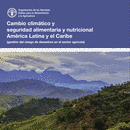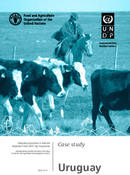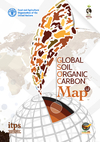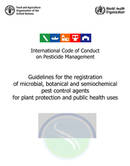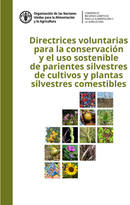Publicaciones
Cambio climático y seguridad alimentaria y nutricional América Latina y el Caribe
Esta publicación es la segunda de la serie Cambio climático y seguridad alimentaria y nutricional América Latina y el Caribe elaborada por la Oficina Regional de FAO para América Latina y el Caribe. El documento aborda temas necesarios de considerar en las estrategias de Seguridad Alimentaria y Nutricional, en el contexto del cambio climático, como antecedente clave para consolidar el desarrollo sostenible en la región. Para ello introduce la gestión del riesgo de desastres como un elemento clave para la seguridad alimentaria y nutricional en el contexto del cambio climático.
Uruguay – Integrating Agriculture in National Adaptation Plans Programme
The case study shows the contribution of the NAP-Ag programme to the ongoing country-led NAP processes. Given that the NAP-Ag programme in Uruguay has only been running since mid-2016, it is too early to assess the results, however lessons can be drawn from the suite of activities that are being developed at the national level. The preparation of this case study is based on interviews with the UNDP – FAO NAP-Ag country coordinator, UNDP and FAO staff, representatives from national Ministries (e.g. Ministry of Housing, Land Planning and the Environment; Ministry of Livestock, Agriculture and Fisheries), as well as extensive review of country reports and publications.
Global Soil Organic Carbon Map
The Global Soil Partnership (GSP) and the Intergovernmental Technical Panel on Soils (ITPS) launched a global endeavor to develop the Global Soil Organic Carbon map (GSOCmap) using a country-driven approach as part of the Global Soil Information System (GLOSIS). GSP provides technical support and on-the-job training to most countries to produce national SOC maps according to standardized specifications.
International code of conduct on pesticide management
These guidelines aim to provide practical guidance in the registration of microorganisms, botanicals and semiochemicals for plant protection and public health. The document focuses primarily on data requirements for registration and evaluation approaches. It provides national authorities with a framework for registering biopesticides, identifies aspects where they differ from chemical pesticides, and indicates where registration authorities should pay special attention. Specific chapters are dedicated to each type of biopesticide: microbials, botanicals and semiochemicals. These guidelines are complementary to the two technical Guidelines already published in the framework of the International FAO/WHO Code of Conduct on Pesticide Management: the Guidelines on registration of pesticides (2010) and the Guidelines on data requirements for the registration of pesticides (2014).
Directrices voluntarias para la conservación a nivel nacional de especies silvestres afines a las plantas cultivadas y plantas silvestres comestibles
Los parientes silvestres de cultivos son posibles fuentes de caracteres deseables para la obtención de variedades bien adaptadas, mientras que las plantas silvestres comestibles son componentes importantes de la dieta de muchas personas en todo el mundo. Lamentablemente, sus hábitats silvestres naturales están cada vez más amenazados por las actividades humanas y las catástrofes naturales. La pérdida de hábitat repercute de manera directa y negativa en la diversidad de estos valiosos recursos. Las presentes directrices, concebidas como material de referencia para la elaboración de un Plan nacional para la conservación y el uso sostenible de parientes silvestres de cultivos y plantas silvestres comestibles, contribuirán a frenar esta continua pérdida de diversidad. Las directrices son, por consiguiente, un instrumento útil para profesionales del desarrollo, investigadores, estudiantes y responsables de la formulación de políticas que trabajan en la conservación y el uso sostenible de estos valiosos recursos.

